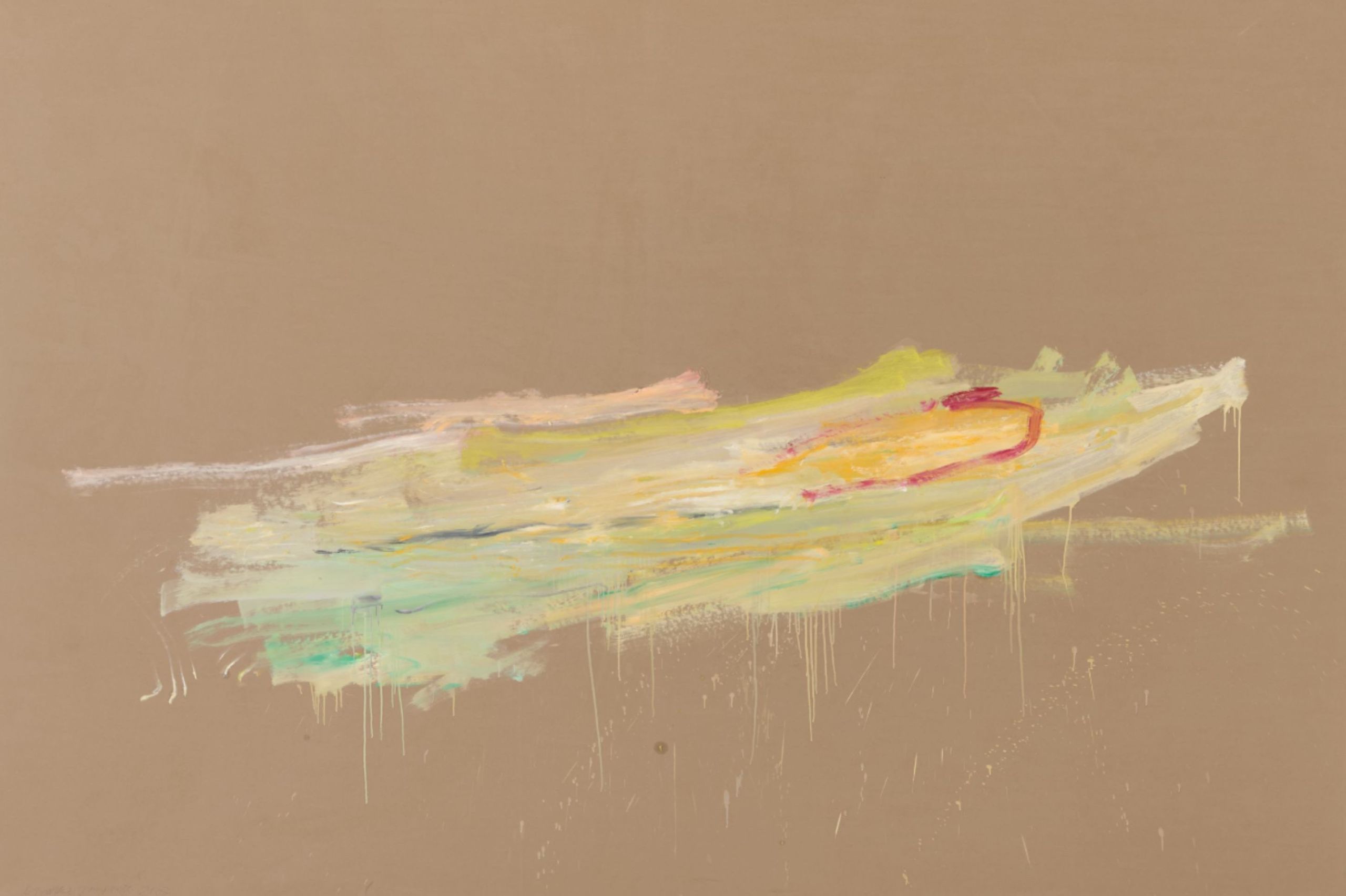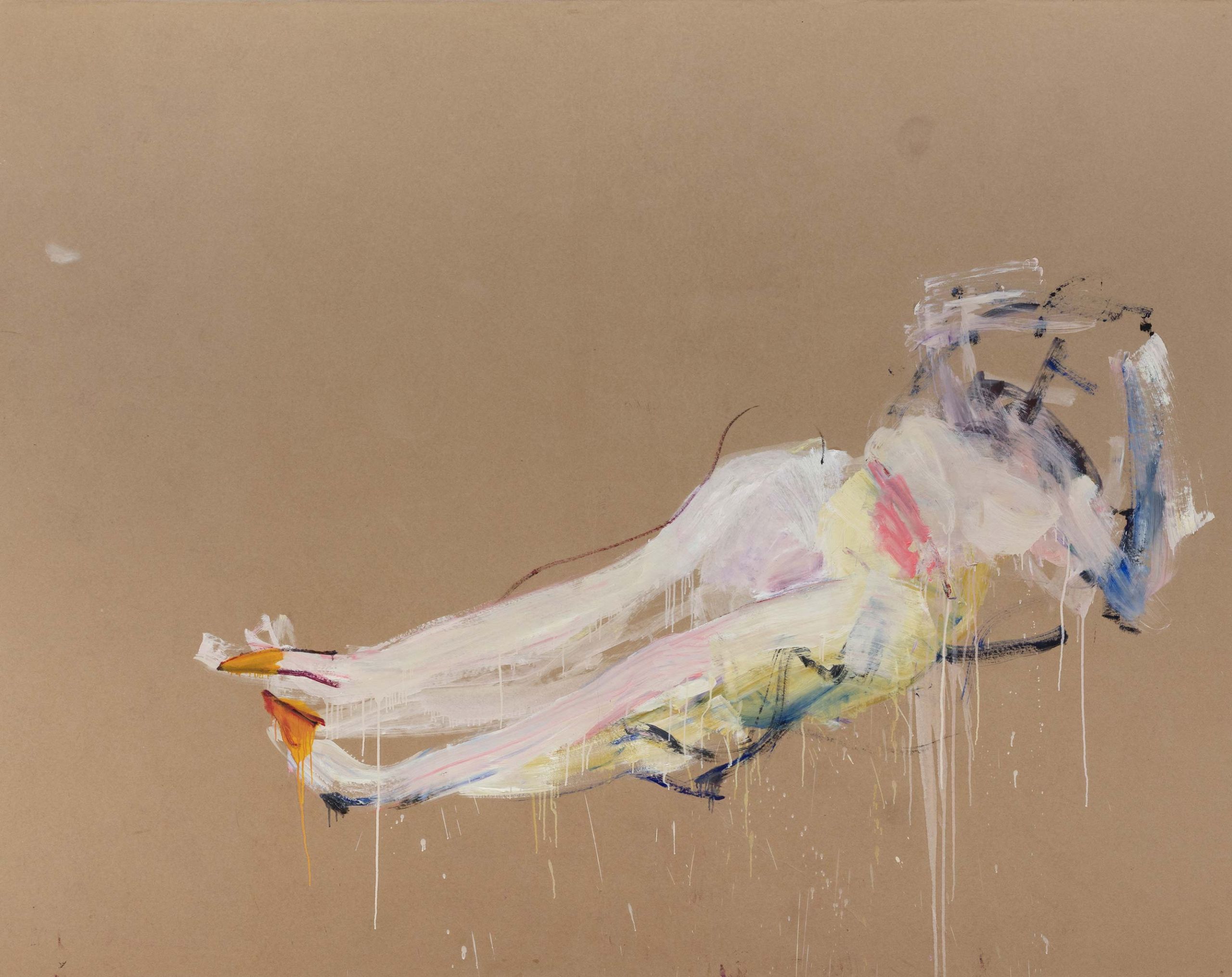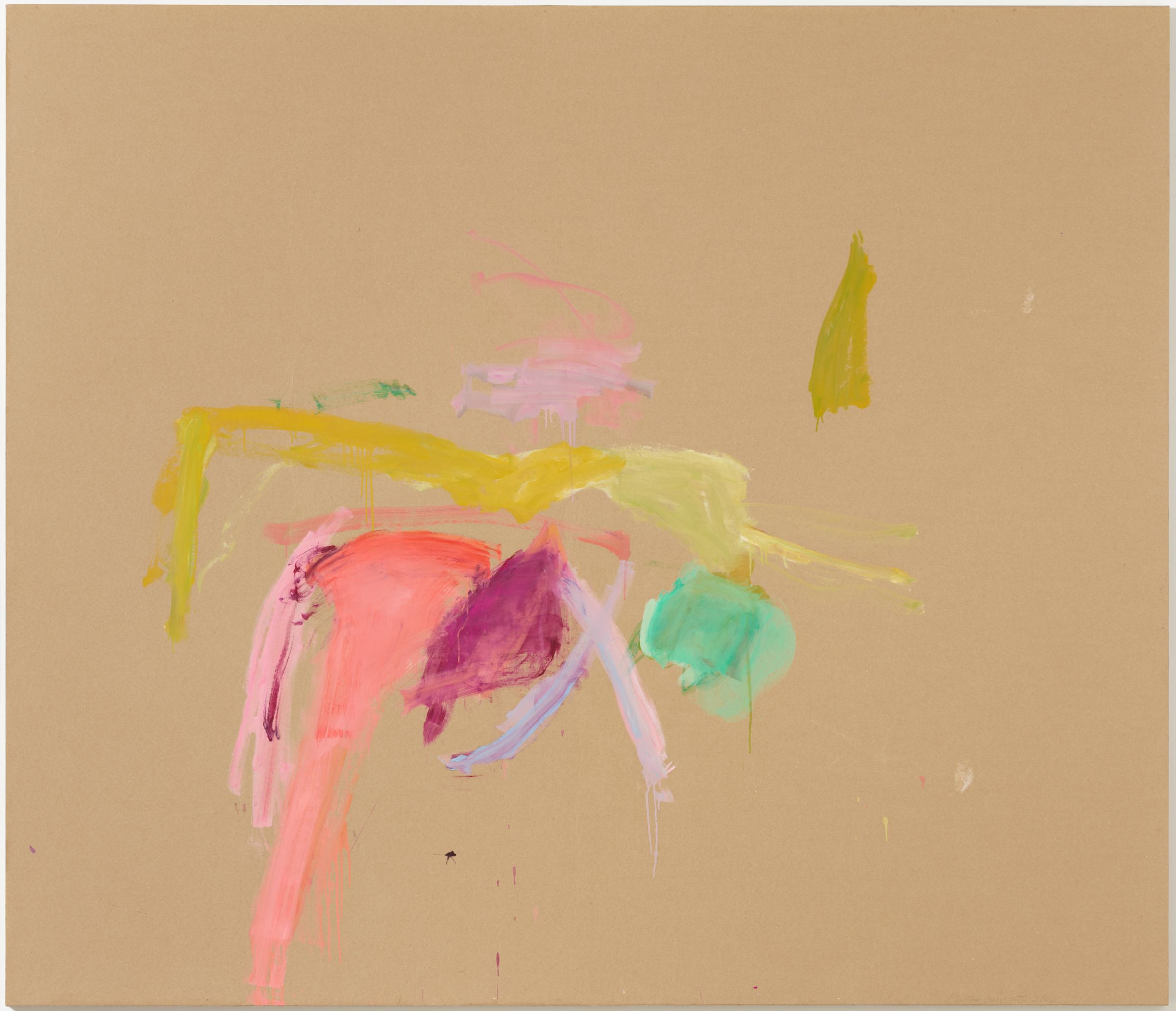209. Art History
Martha Jungwirth consistently finds inspiration in a wide spectrum of art historical painters. Her latest oil paintings are based on works by Francisco de Goya (b. 1746; d. 1828) and Édouard Manet (b. 1832; d. 1883), infusing them with her distinctive artistic vocabulary resulting in radical departures from the original sources. Manet, a key figure in bridging traditional academic painting and avant-garde artistic movements, rejected traditional conventions by incorporating subject matter from modern life in innovative compositions. Jungwirth’s series, influenced by Manet’s A Bunch of Asparagus (1880), displays an exploration of paint’s materiality, achieving a delicate balance between the medium and the untouched areas of the paper through minimal yet precise applications. This approach results in a series where the asparagus motif is reinvented across three paintings, each maintaining an open, ethereal quality with only essential elements present. Jungwirth’s work with oil paint exemplifies its celebrated qualities—a rich texture, a slow drying time allowing for meticulous blending, and versatility in application techniques from thin glazes to thick impasto. Her choice of unconventional substrates, such as brown paper later mounted on canvas, underscores her experimental nature. This exploration extends beyond materials to her approach to content, blending abstraction with realism without explicitly revealing the pictorial source.
Jungwirth’s paintings navigate between abstraction and realism, gesture and space, encapsulating the elusive essence of reality. Her innovative use of oil paints on varied substrates and ability to balance the gestural with the void demonstrate a liberating engagement with material and thematic possibilities.
In 2021, Martha Jungwirth embarked on a series inspired by Francisco de Goya (b. 1746; d. 1828), an artist whose work poignantly reflects the turmoil of Spanish history, delving into themes of suffering, social injustice, and the human psyche. Goya’s critical observations of a nation teetering between old traditions and emerging modernity, and his engagement with Enlightenment ideals versus superstition, resonate with Jungwirth amidst contemporary societal upheavals. Goya transitioned from being a court artist to adopting more profound themes, using metaphors like witches and demons to critique violence, ignorance, and myths. His works, including the nuanced depictions of majas and the dark, introspective Black Paintings, explore the depths of human nature and how society viewed gender and class.
Jungwirth’s paintings echo Goya’s thematic concerns and stylistic boldness, employing a minimalistic approach that distills images to their essential lines and gestures. Her interpretations retain Goya’s symbolic vocabulary, engaging with the same issues of human fragility and societal critique. Particularly, her reflections on Goya’s Black Paintings, such as The Drowning Dog (1820–23), suggest a shared contemplation on mortality and the human condition’s darker aspects. Through a lens of contemporary sensitivity, Jungwirth’s work is in dialogue with Goya’s, presenting a pared-down aesthetic that captures the essence of the image while maintaining her unique artistic voice. Her series not only pays homage to Goya’s ingenuity but also extends his inquiry into the complexities of human nature and the inexorable presence of death, underscoring the timeless relevance of his work.



